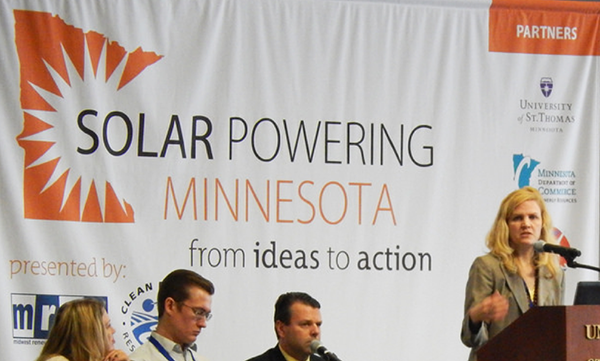
What Is a Value of Solar Policy?
In 2013, Minnesota become the first state to implement a value of solar policy, designed as an alternative to the net metering policies that so many solar users enjoy. Adoption of the policy was left up to the state’s investor-owned utilities, and none has taken the initiative just yet. So how does the value of solar policy work, and is it better for consumers than net metering?
How Does Value of Solar Work?
The value of solar tariff, or VOST, is designed to compensate solar power customers for the long-term value of the solar energy they generate. Some of the criteria taken into account in the overall value formulation include the costs that solar adoption allows utilities to avoid, including avoided fuel, generation and distribution costs, and avoided environmental costs. Solar owners are also credited for reducing wear and tear on the electrical grid, and for allowing utilities to purchase power with a lower environmental cost, at fixed rates for years to come.
The VOST is designed to be value neutral to utilities, so that paying distributed solar generators (anyone with a solar array) is no more expensive than the overall costs of continuing to produce the energy these customers would use.
Value of Solar Tariffs could be the solution to an increasingly contentious energy landscape, which pits traditional utilities, some of which are actively trying to get into the solar field themselves, against solar advocates, photovoltaic manufacturers, and consumers.
Value of Solar Versus Net Metering: What’s the Difference?
Net metering policies require utility companies to reimburse solar adopters for the excess energy they produce. When solar power production is at its peak, during the middle of the day for example, solar customers feed power into the grid. When solar energy production tapers off at night or on cloudy days, solar customers can draw power from the grid. The energy they produce is subtracted, kWh for KWh, from their utility bills. The end result is that they end up paying only for the electricity they use, and not a penny more.
Under a value of solar tariff policy, solar users would draw 100% of their power from the traditional power grid, and 100% of the power they generate would be fed into the grid. At the end of the bill cycle, solar customers pay their full power bills, and utilities compensate them for the power they’ve generated, based on the rates stipulated by the value of solar tariff.
Is Value of Solar Good for Consumers?
Well, that depends on whom you ask. There are solar advocates on both sides of the debate; and while most have the same end goals in mind (reduced dependence on foreign oil, a brighter, greener future, etc.), not everyone agrees on the best paths to accomplishing these goals.
Advocates say the VOST initiatives will increase pricing transparency, and allow them to reap benefits that reflect the true value of solar power.
Critics are quick to point out that the power solar users sell back to utilities could be considered taxable income. They are also concerned about the fact that VOSTs would be recalculated every year, leaving room for utilities to try reduce their own responsibilities to solar users, all while selling power at ever-increasing rates.
Will VOS Be Implemented?
In places like Minnesota, where VOS has been provided as an option, the utilities are free to choose to implement the policy at any time. Other states are currently debating introducing similar policies, even those that have comparatively small solar markets.
It’s hard to say when or if these policies will be put into play, but there’s no doubt that utilities and some solar advocates will continue to push for changes to solar policy as the market and the conditions that drive it continue to evolve.
[Photo Credit: Minnesota Energy Policy]
Start making more
money today!
Search Categories
Tags
Tag Cloud
Latest from Twitter
Contact Us
Call us at 310-540-8900 or fill out the form below and we’ll tell you how you can get high quality leads for free*.
* Get up to 10% free leads on your first order!